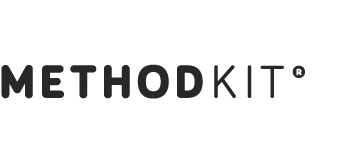THEORY
5 principles for Conversation Design
By Ola Möller and Jordan Valentin Lane
We can explore a project or topic from many different angles. In meetings, we might have an agenda that defines the conversation to be had. Conversations can be more or less structured, but as a moderator, teacher or facilitator, you can structure discussions and create direction for those who participate. We have described 5 fundamental ways to shape conversations below.
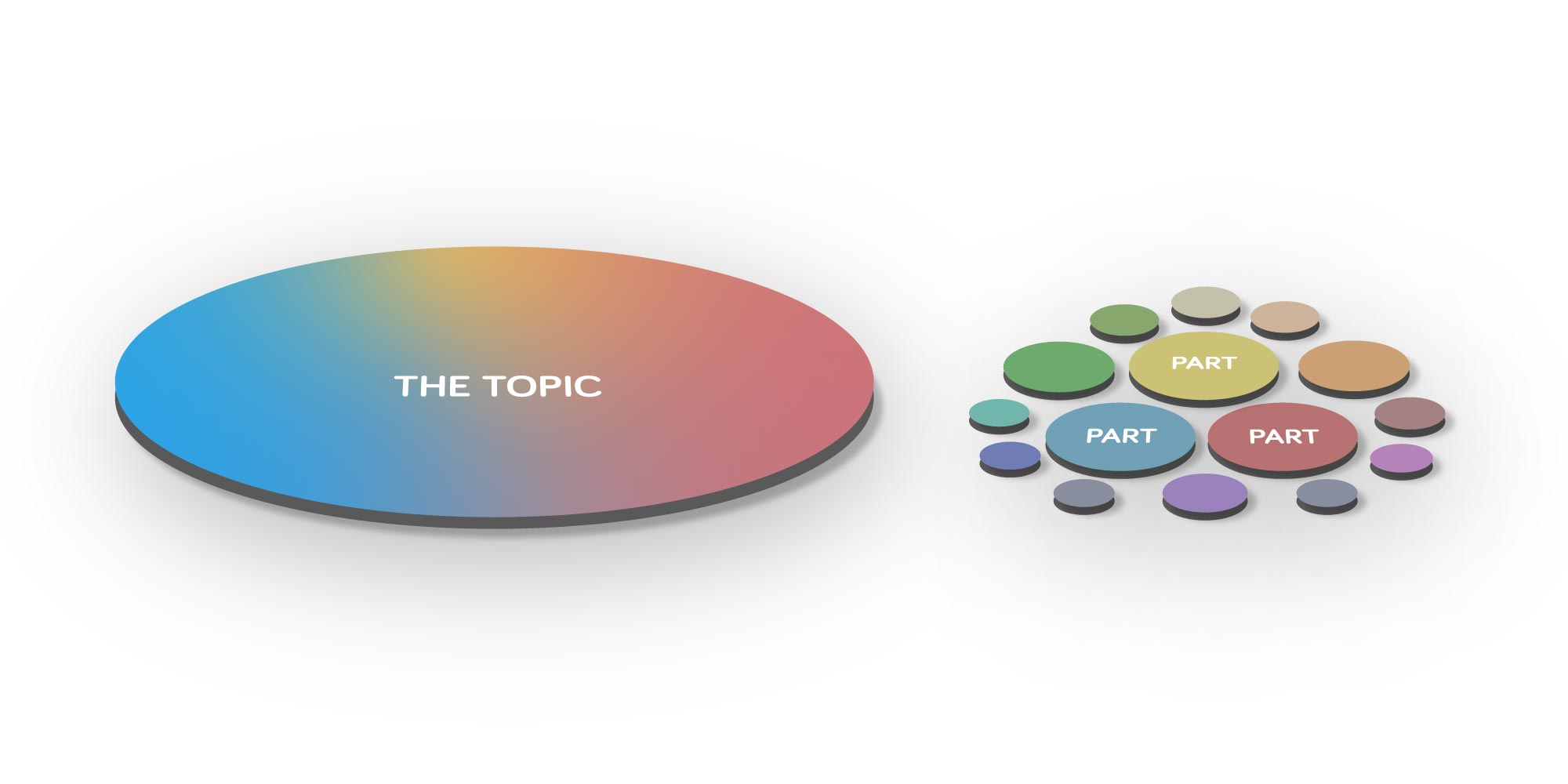
1. Switch from parts to wholes (& back again)
Identify parts that make up a whole and the connections between them
Take a neighborhood for example. We can discuss it as a whole — often in relation to other neighborhoods when comparing statistics and characteristics — or we can explore its parts (like buildings, residents, streetlife, community, light, weather & transportation). By exploring the whole through the sum of its parts, you can switch focus (from parts to wholes & back again) in a manner that should make sure you focus on the right things and don’t forget the parts crucial to your project.
Moving between wholes and parts is very much an exercise in exploring and setting boundaries. Boundaries can be flexible, How far can the conversation diverge? You can decide how far a conversation may diverge, the scope(or decide not to). Familiarize yourself with the edges of your conversation. How far can the conversation diverge? What is the scope? When is it time to pivot or extend the edges? Being aware of your movements from wholes to parts (or patterns to details) will ensure that you maintain focus without stifling investigation on a more detailed level.
Examples
- MethodKit for … (The essential parts of different topics)
- Business model canvas (selection of parts for business development)
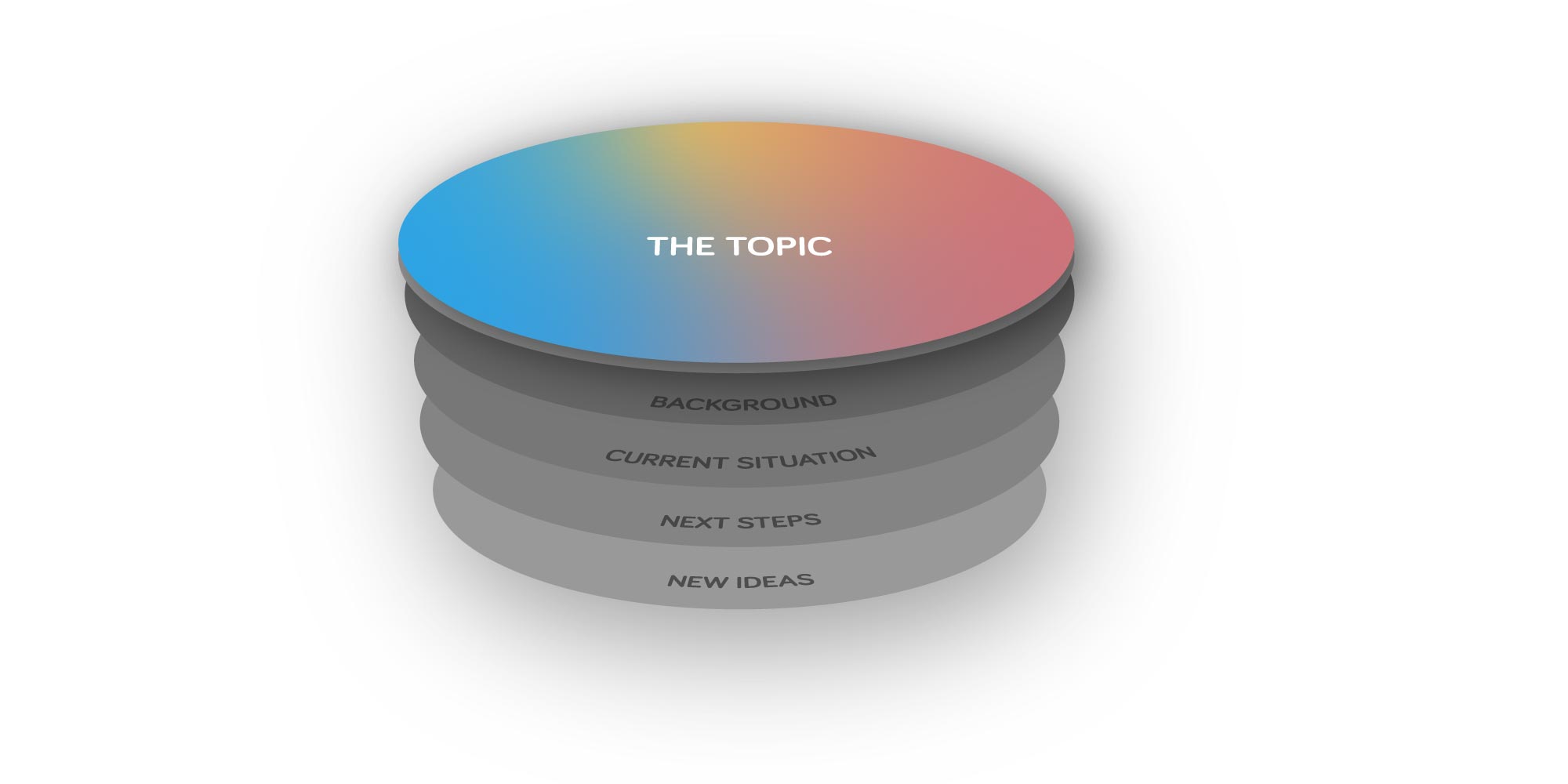
2. See the layers – know where you are
Divide conversations into layers to segment your thinking.
By deciding which layers to work with, you can add structure to conversations. (We prefer ‘layers’ to ‘steps’ as we know processes rarely go in a linear process.) This allows you to make sure you stay on point and don’t drift*.* Before you start a conversation it is very useful to know which layers you need to focus on.
Layers can be combined in a sequence to help you reach your goals. By first talking about the current situation, then new ideas and last next steps.
Examples
- MethodKit with Layers (cards with common layers)
- Project applications (eg. background, goals, method, follow-up, budget)
- Academic papers (eg. abstract, introduction, methodology, results, discussion & conclusion)
- Six thinking hats (Looking at projects and ideas from six different lenses: Facts, emotion, benefit, ideas, planning & judgement)
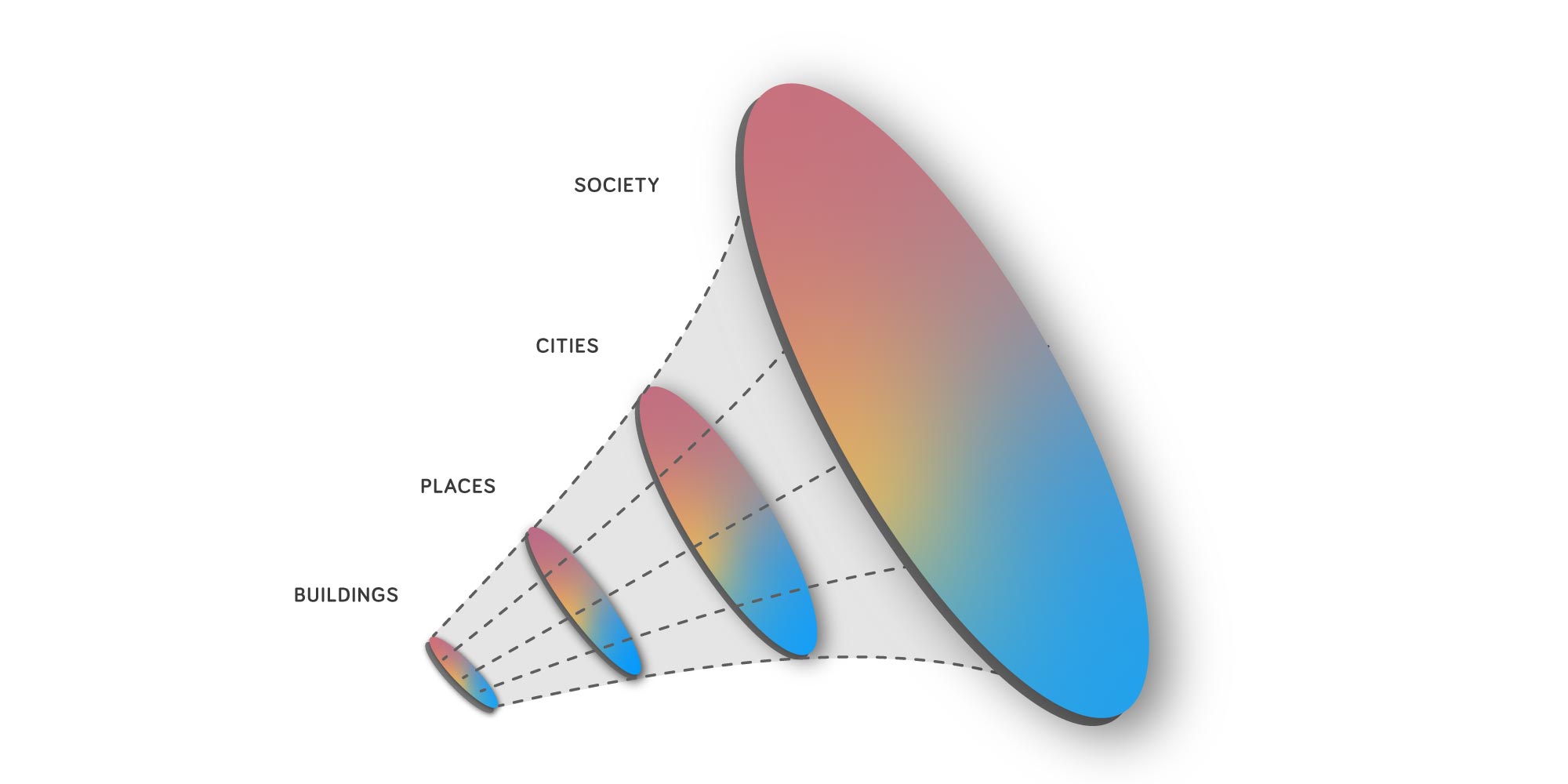
3. Think scale
Switch between zooming in to see the details and out to see the big picture.
As an architect, you think both about the city as a whole, but also about neighborhoods, places, streets & buildings. Things exist at different levels and sometimes the solution to work matters are in the details – sometimes in understanding the bigger picture.
Examples
- Discussion in a region or municipality shifting between…
- Smaller scale (A specific street or park)
- Larger scale (Transport system, power grid & regional co-operation
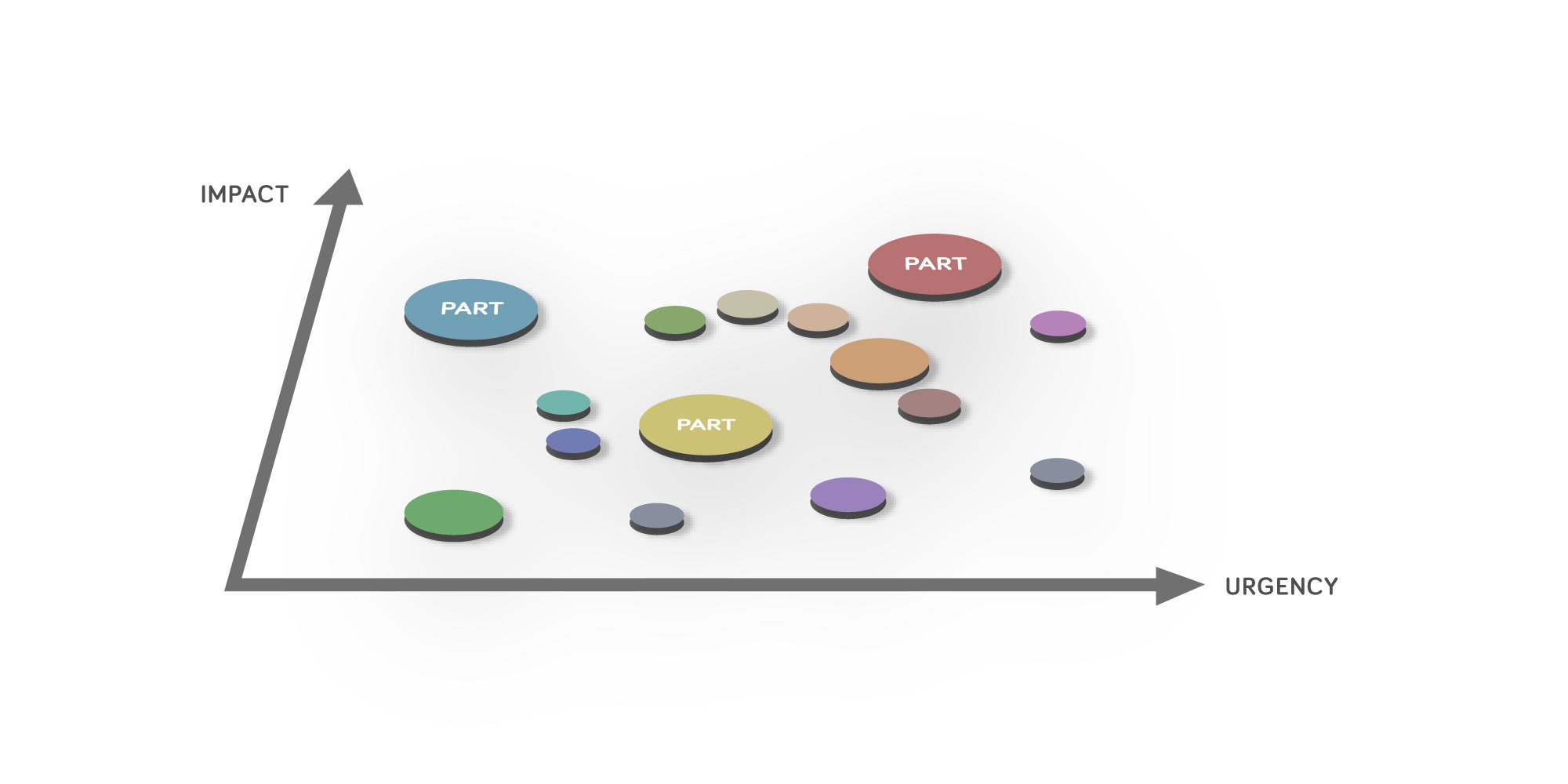
4. Select based on criteria
Prioritize and understand which parts and triggers are important in each situation.
By understanding how you judge different parts (1) and triggers (5) you can focus and prioritize effectively. Using grids helps you understand what’s important at the moment.
Examples
- MethodKit for Selection Criteria (a predefined list of criteria for selection)
- Priority lists
- Selection Grids (x+y) and Scales (x
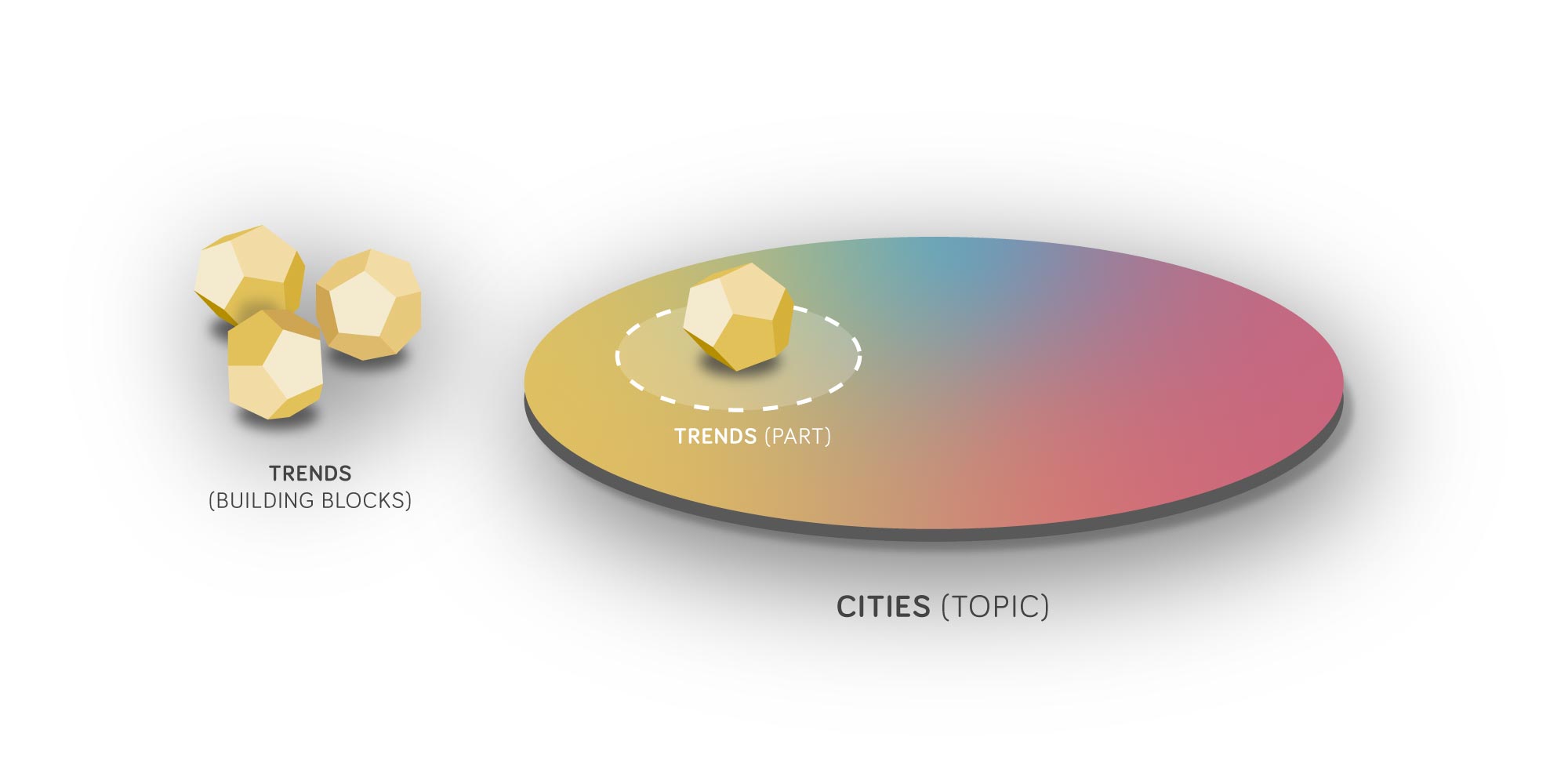
5. Inject triggers into conversations
A trigger is a detail (for example a trend, technology, business model or outcome etc) that can be injected to spark new ideas and speed up a conversation.
While parts (1), layers (2) and scale (3) are ways to frame conversations, they are not the actual conversation, they’re the area on which conversations occur. Talking about the future of a city (topic) you might discuss trends (part of urban development).
A trigger is especially effective in ideation and explorative processes. For example, using trend triggers when discussing cities can allow you to explore multiple futures. Combine multiple triggers together to ideate quickly. They allow you to navigate context and play with different ideas and directions. Triggers are recurring content in conversations. To have the triggers predefined means that you don’t have to research, prepare and recall them every time you want to work with them. So instead of recalling possible trends yourselves, you have them all ready to work with straight away.
Examples
- MethodKit with … (for example trends, technologies & business models)
- Subgoals of UN Global Goals (SDGs)
- Trend reports
